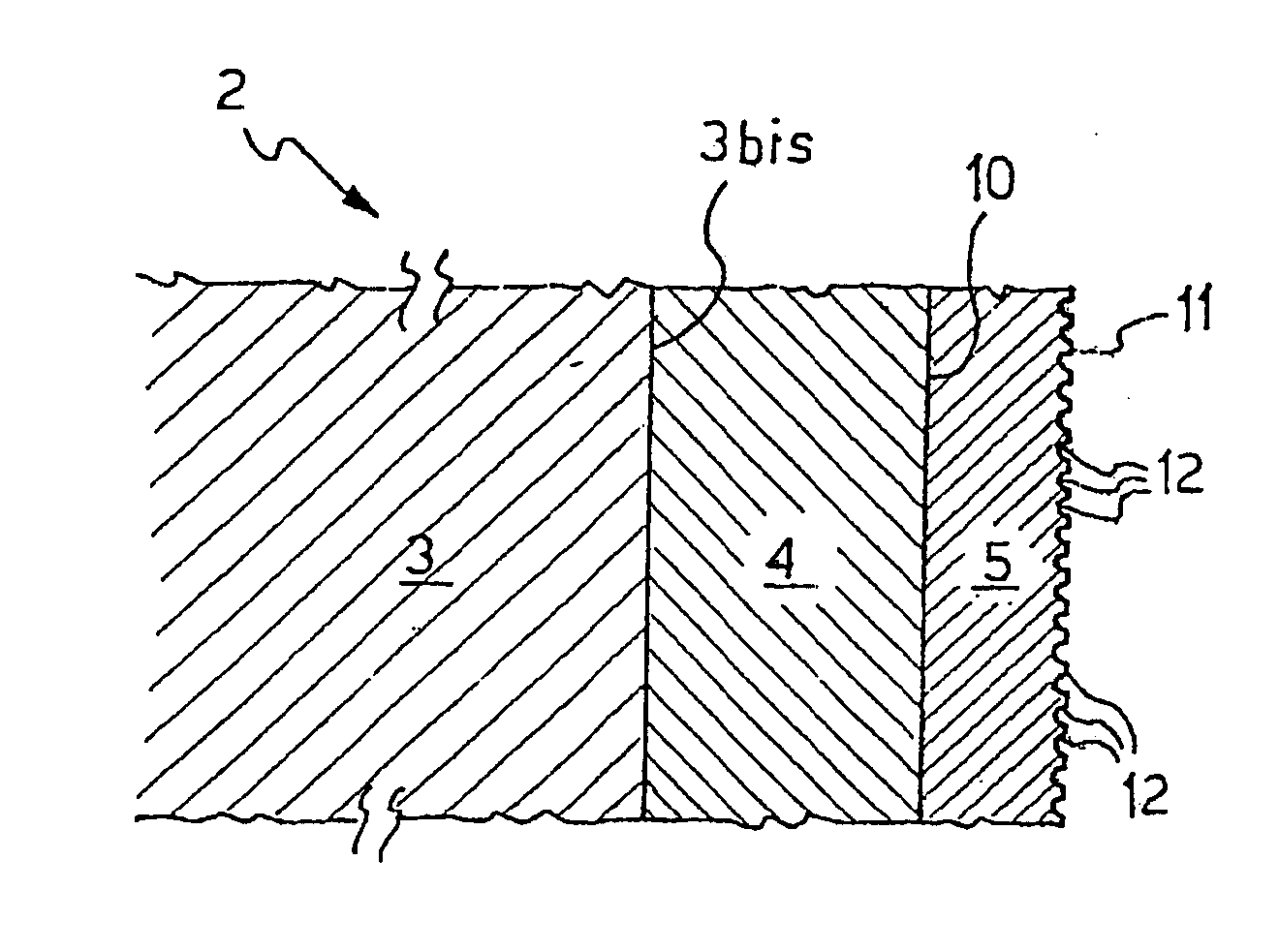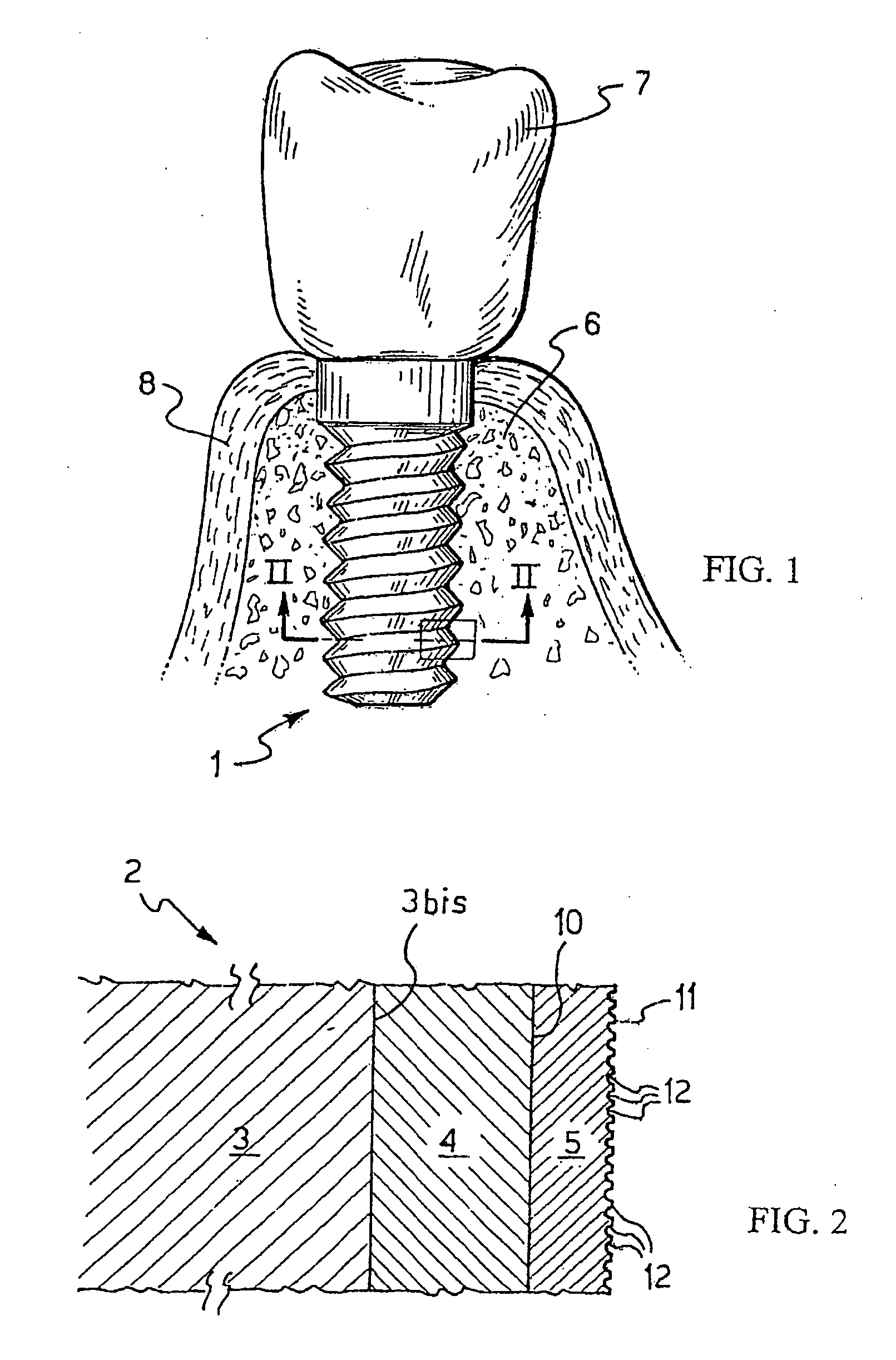Treatment Of An Osteointegrative Interface
a biomimetic osteointegrative and interface technology, applied in the field of osteointegrative interface treatment, can solve the problems of weak mechanical bond between oxide and crystals, insufficient uniform distribution, and insufficient improvement of titanium biomimetic properties, etc., to promote protein adhesion, promote osteoblast adhesion, and promote the mineralization of extracellular matrix
- Summary
- Abstract
- Description
- Claims
- Application Information
AI Technical Summary
Benefits of technology
Problems solved by technology
Method used
Image
Examples
Embodiment Construction
[0032]One of the most important requirements in applications for osteointegrative interfaces is to synthesize a surface with crystals of dimensions comparable to those of biological apatite, so that an increase in the surface area of the crystals can improve the interactions at the interface with the bone tissue and increase the capability of the material thus to create a bond with the bone tissue.
[0033]With reference to appended FIGS. 1 and 2, which show an example of an osteointegrative interface for a dental implant 1 according to the present invention, this requirement is satisfied.
[0034]With reference in particular to FIG. 2, an enlarged section through the implant 1, taken on the line II-II of FIG. 1 so as to show the layers making up the surface of the osteointegrative interface 1, is indicated 2.
[0035]These layers comprise a substrate 3 generically of titanium, a protective layer 4, generically of titanium oxide, superimposed on the surface 3bis of the substrate 3, and a sur...
PUM
| Property | Measurement | Unit |
|---|---|---|
| temperature | aaaaa | aaaaa |
| voltage | aaaaa | aaaaa |
| temperature | aaaaa | aaaaa |
Abstract
Description
Claims
Application Information
 Login to View More
Login to View More - R&D
- Intellectual Property
- Life Sciences
- Materials
- Tech Scout
- Unparalleled Data Quality
- Higher Quality Content
- 60% Fewer Hallucinations
Browse by: Latest US Patents, China's latest patents, Technical Efficacy Thesaurus, Application Domain, Technology Topic, Popular Technical Reports.
© 2025 PatSnap. All rights reserved.Legal|Privacy policy|Modern Slavery Act Transparency Statement|Sitemap|About US| Contact US: help@patsnap.com


